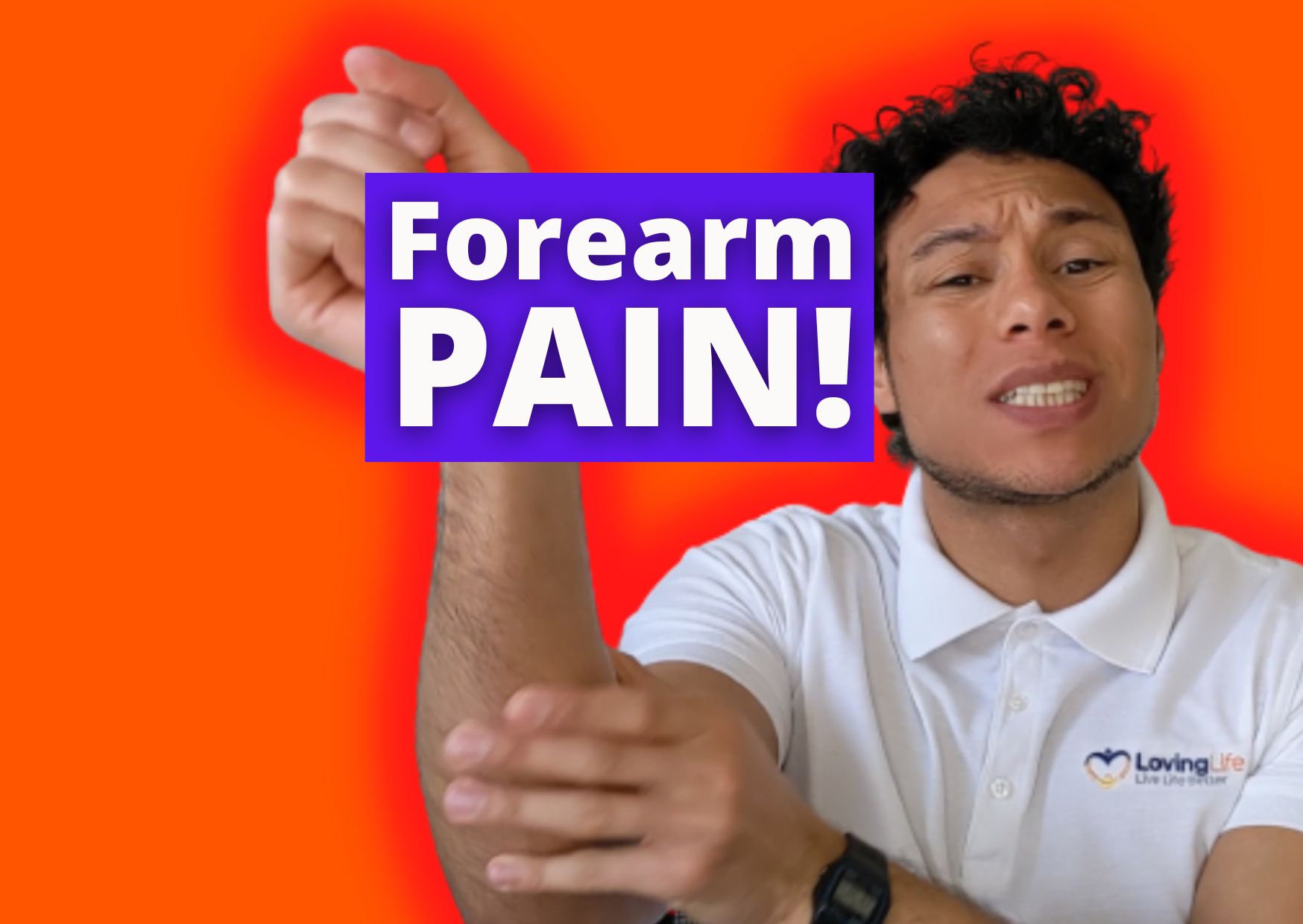Forearm Pain? 4 Things That Might Be Causing It!
Are you experiencing forearm pain? Are your forearms hurting every time you bicep curl, bench press, punch, or just move your arm?
We’ll explore the possible reasons that could be causing or contributing to your forearm pain as well as give some useful tips to help reduce, or even cure the pain.
Of course, it’s always best to seek help from a professional, but these 4 points may give you a clue as to why you’re forearm is hurting.
4 Things That Might Be Causing Your Forearm Pain!
- Muscular Restriction
When the muscles in our forearms are tight, tense or restricted this can cause pain, discomfort or restriction.
Some of the muscles in the forearm attach at the elbow and if you’re experiencing pain there, it could be because the tightness of the muscles is causing the tendons to pull at the point of attachment.
This restriction can contribute to a sensation of restriction, discomfort and pain.
- Poor technique
We’ve all seen someone performing an exercise at the gym and thought to ourselves, “What on earth are they doing”.
If you haven’t seen that person, that person might be you! Poor technique can put our muscles, joints and tendons in positions they’re not supposed to be in.
This could be the reason causing your pain. If you’re getting pain whilst doing certain exercises, check with a professional that you’re doing it correctly. Technique is very important.
- Repetitive impact
Are you involved in repetitive daily tasks?
Are you performing repetitive actions in your sport? If you’re continuously performing punching motions or bending and flexing the arm repetitively or even the wrists or fingers, these repetitive movements can all be contributing factors to your forearm pain.
Boxers may experience forearm pain due to the repetition of punching the punch bags. Tennis players may experience pain from the repetition of hitting the tennis balls; cricket bowlers may experience the pain because of the repetition of bowling.
All of these repetitive motions can damage the arm, elbow, wrist and forearm, if done continuously. Is there a specific repetitive movement you’re doing that could be causing your pain?
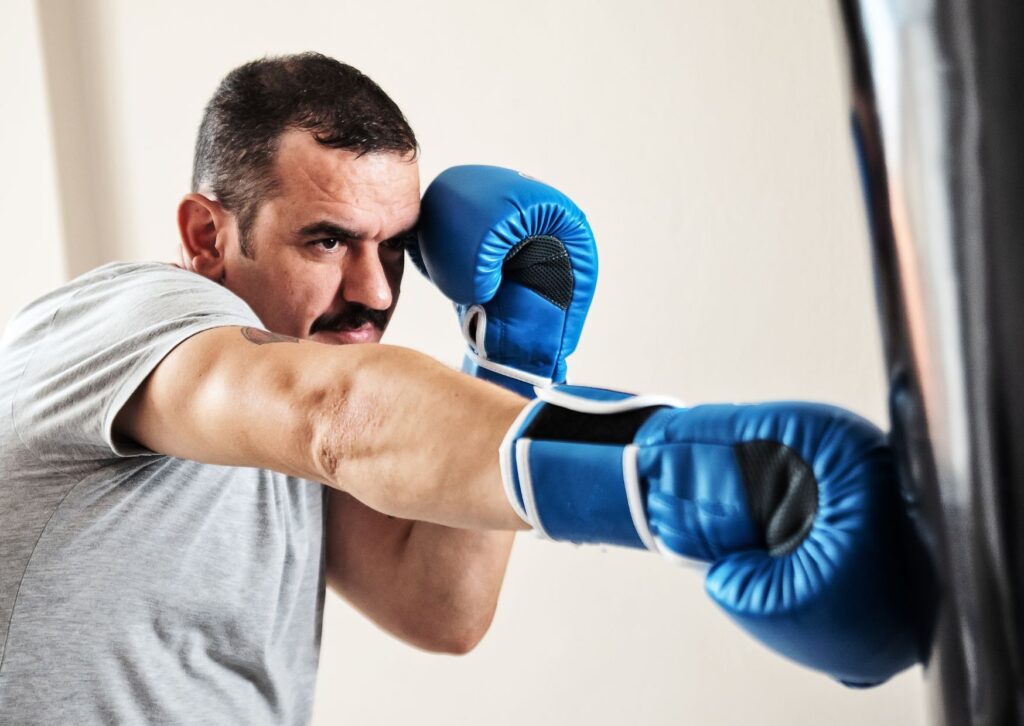
- Over training
If you’re training too often you may be putting too much pressure on the muscles in your forearm.
Over training can cause continuous pain, achy joints, illness and even disturbed sleep. If you’re training a lot and you’re noticing any of these symptoms, maybe you should think about having a few days off.
What You Can Do to Help!
Firstly, it’s always best to seek the advice of a health professional if you’re in pain. However, below are some useful tips that may help.
- Rest
We’ll start with the most basic of recommendations. The one we all know but often ignore. Yes, you’ve guessed it. Rest! If your forearm is in pain, specifically when doing certain movements, you need to rest it. It’s hard for any damaged area to heal if it is continuously being put under pressure. There may be some exercises that can help your pain but it’s best to consult a specialist before you decide to exercise again.
- Ice
The next form of recovery that may help your forearm is ice. Ice is fantastic for reducing any swelling as well as helping to reduce pain, at least temporarily. Ice helps to slow down the inflammatory response phase to an injury to ensure that a damaged area isn’t filled with swelling.
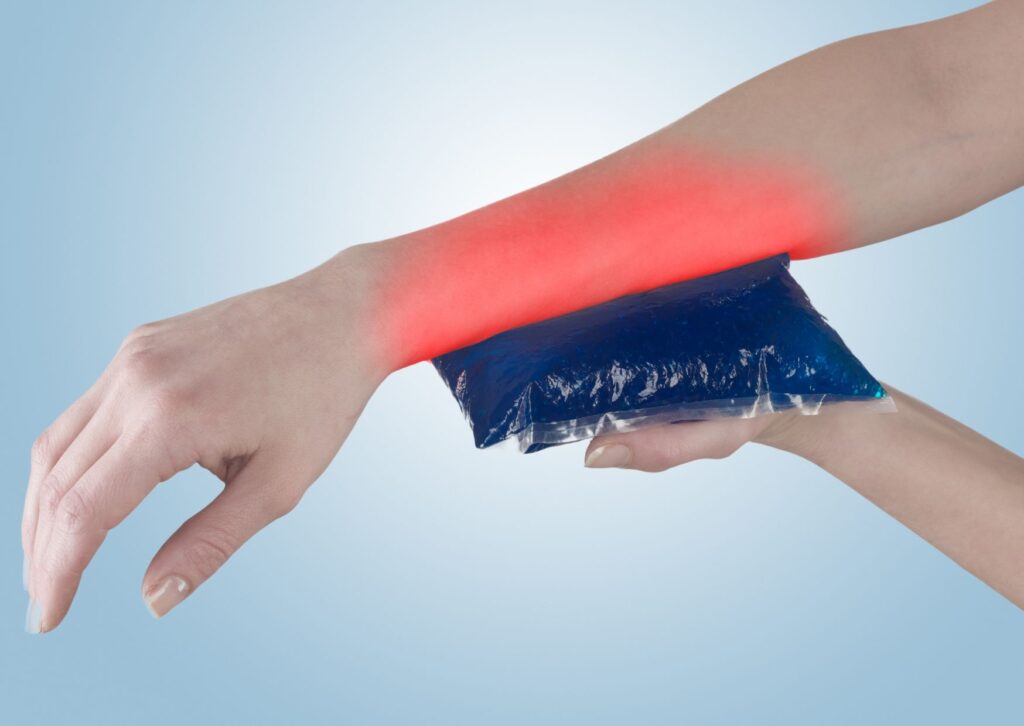
- Reduce the restriction
If your pain is coming from muscular restriction then there’s only one solution to helping it. Reduce the restriction! This is easier said than done. This can be done through stretching, sports or remedial massage
You can also aid in reducing the restriction with a trigger point ball. Check out our video above
- Get professional help and advice!
There’s no better person to ask than someone who regularly treats or sees those with forearm pain on a regular basis. It’s always best to seek help from a professional to help get yourself back on track. Head over to our physical therapy, we’d be more then happy to help!
Upper Forearm Pain?
The muscles in the upper forearm consist of a range of muscles.
There are smaller, more intricate muscles, such as the Supinator and Pronator Teres, as well as others.
And there are larger muscles such as the Brachioradialis and flexor carpi radialis, just to name a few.
When experiencing upper forearm pain, it’s possible that some, if not all of these muscles are damaged in some way.
Speaking with a specialist will help you to identify what is wrong, but this article should help too.
For tips on what to do, read our section on what you can do to help your forearm pain.

Right Forearm Pain Vs Left Forearm Pain?
When it comes to the anatomy of the forearm, for able-bodied individuals, there’s no difference between the right and the left.
The positioning of the muscles is just on opposite sides.
When it comes to specific pain in one of those forearms, we need to look at what we may have done with that forearm, that the other didn’t experience.
For example, if you’re right-handed and work at a computer, your right hand will use the mouse to click, whereas your left hand doesn’t.
This means you are putting slightly more strain on the right forearm than the left.
This is just one example, I’m sure you can think of specific things to you that could be causing you to use and aggravate one forearm more than the other.
It’s not uncommon for us to experience more pain in the side that we use the most and are more dominant with.
If you’re unsure of what caused your pain, check out our section on 4 things that might be causing your forearm pain.
Forearm Cramps
A forearm cramp is a painful involuntary contraction of the muscles in the forearm and is often caused by overuse or fatigue.
Forearm cramps can be extremely painful and, in some cases, unbearable.
Stretching the forearm can help to alleviate some of the pain that comes with a forearm cramp.
However, prevention is always better than cure.
It’s best to avoid or reduce the things that may be causing your forearm cramp.
Here are a few top tips to help you stay cramp free.
- Stay hydrated (Dehydration can contribute massively to cramps)
- Avoid repetitive strenuous pressure on the forearms
- Use Electrolytes (Electrolytes have been shown to help with
cramp)
- Stretch the forearm
- Massage the forearm (Sports massage is best)
For alternative ways to help, check out our section on 3 products that may help your forearm pain
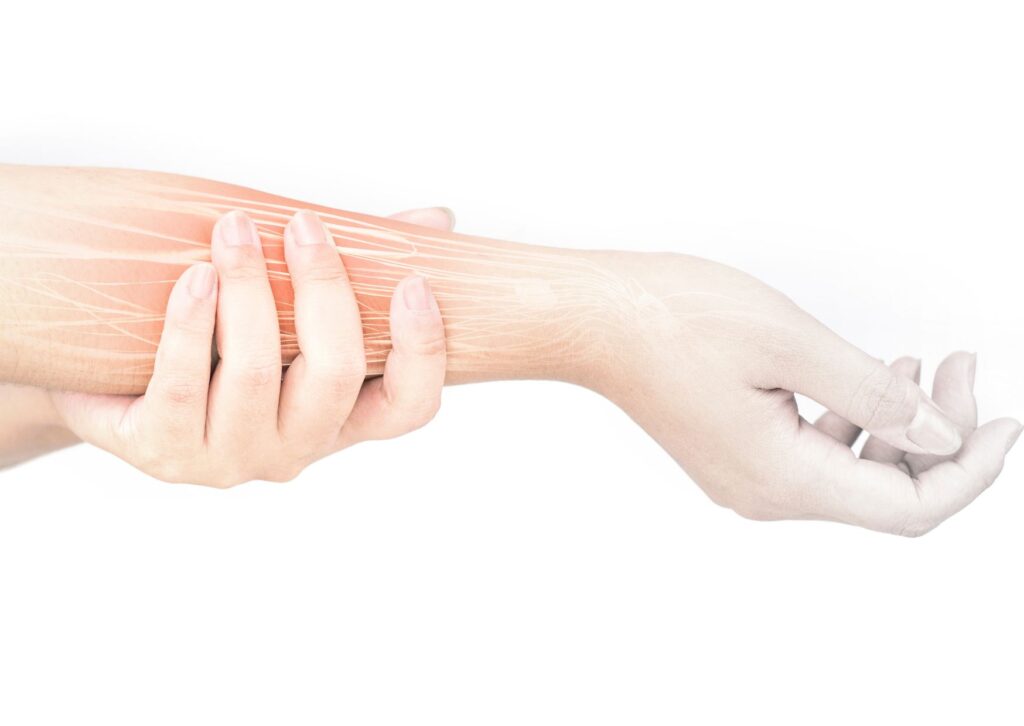
Aching Pain in The Forearm
Aching in the forearm can give the sensation of the forearm feeling heavy, tired, dull, and weak.
This can be due to multiple reasons but it’s very often because of excessive or overuse.
It’s also possible the forearm has been in an unusual or awkward position that has caused it to ache.
For tips on what to do, read our section on what you can do to help your forearm pain.
Sore Forearms?
Soreness in the forearm muscles can be due to a variety of reasons.
There is a difference between soreness and pain. Pain can prevent you from performing daily tasks, whereas in most cases, soreness can be more of an inconvenience.
To work out why your forearms are sore, it’s good to look back at the activities that you may have participated in over the last 24 – 48 hours.
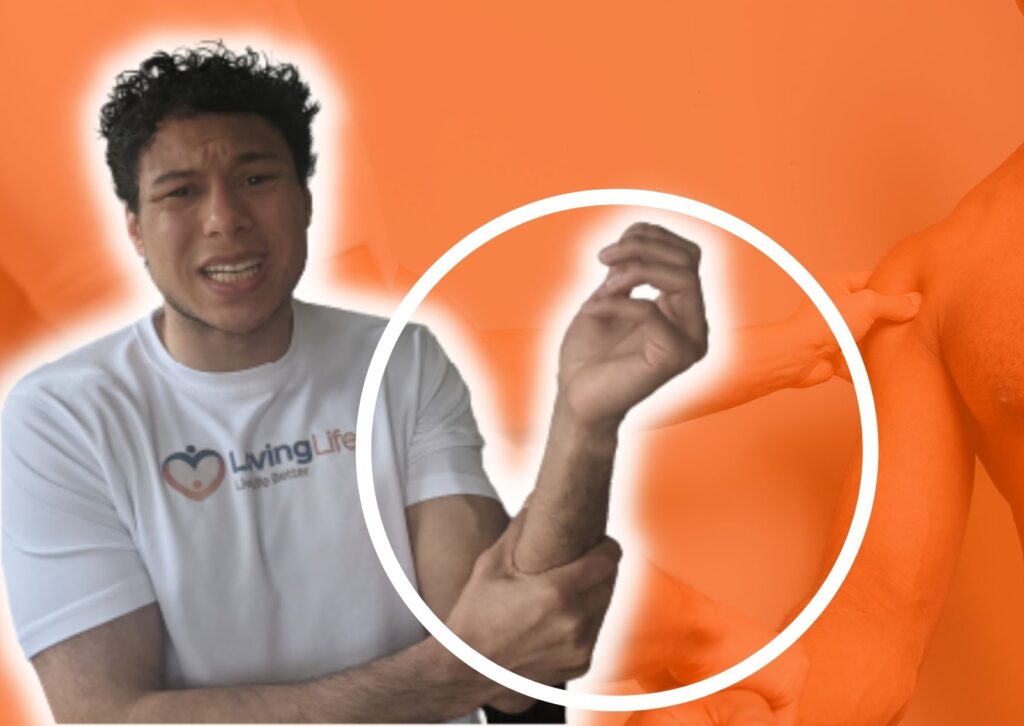
Have you participated in any activities that require you to grip, hold or carry anything?
Have you participated in any activities that have hit, bumped or knocked your forearm muscles?
Did you sleep in an awkward position which may have put pressure on your forearm?
Analysing your activity over the last few days will help you to identify what may be making your forearms sore.
If you’ve been to the gym or done some form of physical exercise, there are 4 reasons at the top of this article as to why your forearms may be sore.
If not, continue to analyse what you’ve been doing over the last two days, and try to work out what may have contributed to this soreness
3 Products That May Help Your Forearm Pain!
- Trigger point balls – As mentioned, reducing the restriction in your forearm is a great way to ease the tension and restriction that may be causing your pain.
These trigger point balls come in three different levels of firmness, meaning you can use the ball you feel is most appropriate. If you have no idea what to do. Watch the video above!
- Heat pack – Heat is a fantastic way to help reduce tension and tightness. Heat can increase blood flow to an area and warm up our muscles. This can then help with the pain and discomfort we may be experiencing through tightness and restriction.
A hot bath is another way to ease some of the restriction and tightness we may be experiencing in the forearm. Of course, use common sense and don’t burn yourself.
- Massage gun – Among some therapists the massage gun can seem a little controversial. After all, the massage gun can’t assess your tension and tightness like the human hands of a sports or deep tissue massage therapist.
However, many individuals have claimed how useful they find the gun. Especially after a hard training session.
Some individuals find it extremely beneficial for reducing muscular restriction and tension.
Don’t knock it until you’ve tried it.
Want to know how to use a massage gun?
Check out our blog on How To Use A Massage Gun Effectively
Do You Know How to Stretch The Forearm?
Check out our blog on How To Stretch The Forearm!
Massage for forearm tension
Would you like to receive Health and Wellbeing tips via our mailing list?
GET HELP WITH YOUR FOREARM PAIN WITH A PHYSICAL THERAPY SESSION

